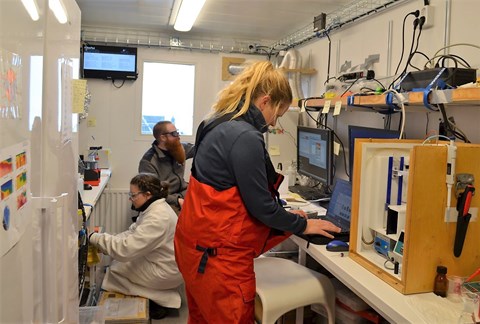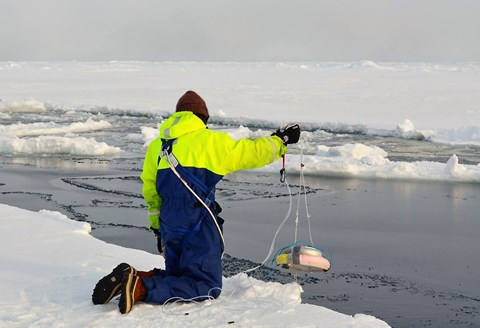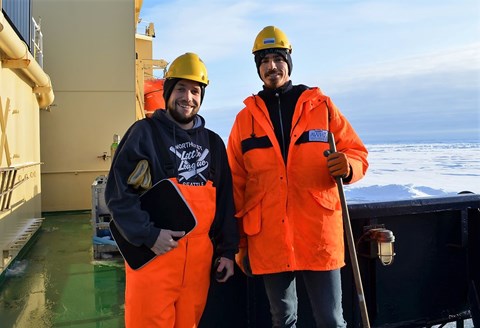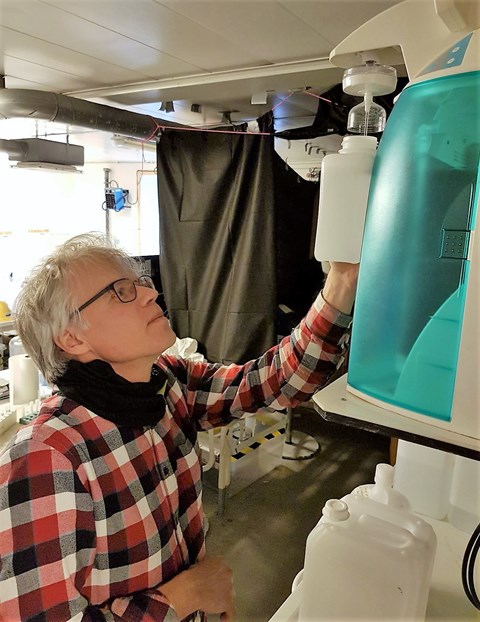Sampling day and night
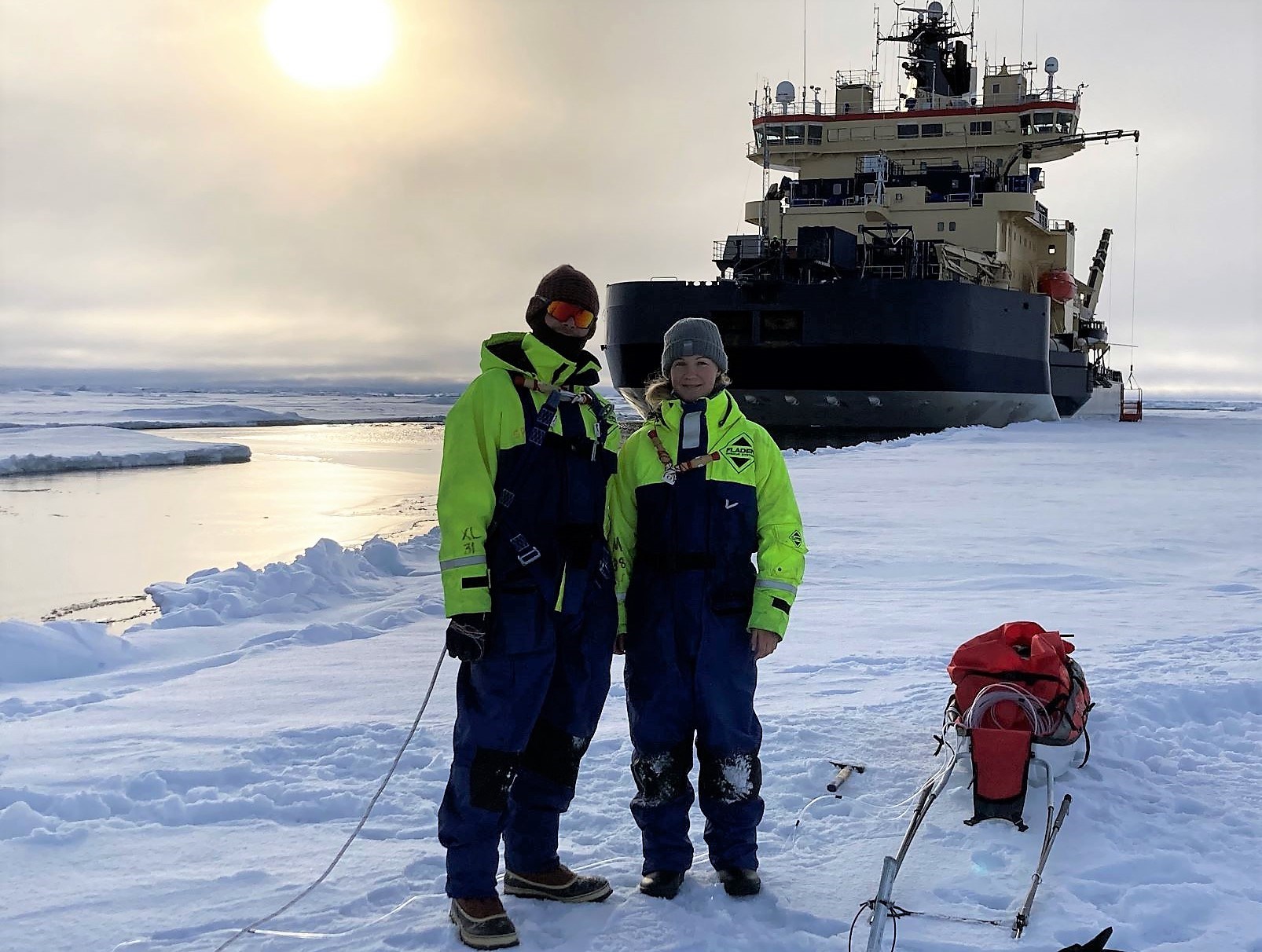 John Prytherch (Stockholm University) and Sonja Murto (Stockholm University) in front of Oden when they are going to do their investigations of gas flows. To get the equipment out on the ice, they use sledges. In the red sledge there is a computer needed for the measurements and they use 12V batteries to power them out on the ice. Photo: Anna Stiby.
John Prytherch (Stockholm University) and Sonja Murto (Stockholm University) in front of Oden when they are going to do their investigations of gas flows. To get the equipment out on the ice, they use sledges. In the red sledge there is a computer needed for the measurements and they use 12V batteries to power them out on the ice. Photo: Anna Stiby.
Arctic Ocean, evening 1 September, N86°02.8 W39°56.3
An easterly wind of 4 m/s is blowing and it is about -3 °C. Oden lies still in the ice under a cloudy sky while we wait for the CTD in the bow to come up from a depth of 3 300 meters so that we can continue our journey towards the next station. We are expected to arrive around 03 tomorrow, then we do further deep CTD throws and continue with ice station and network sampling during the day.
We are starting to see the end of this fantastic expedition so everyone is doing everything to ensure that we have time for as much important research as possible before we have to set course home to Sweden on 11 September. This has, for example, involved sampling even at night, where enthusiastic researchers have, among other things, drilled ice cores and sampled the seawater in the light of the midnight sun.
Today's photos show a little taste of what the researching chemists and meteorologists are doing.
Text: Maria Samuelsson, expedition coordinator
